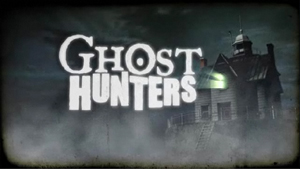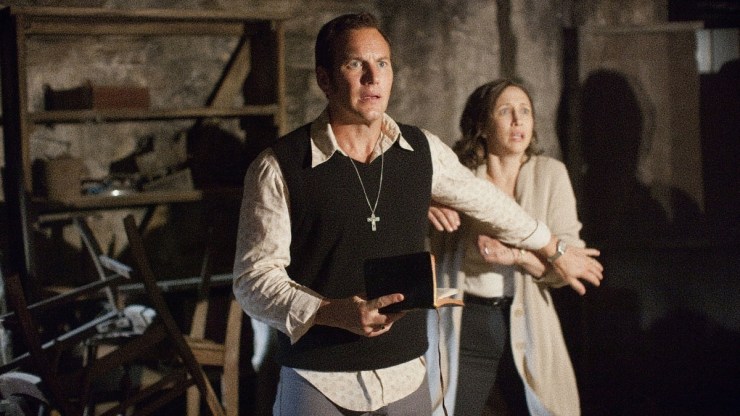Spirits, Faith, and Terror: How the Christian Supernatural Haunts Our TV Screens (Elliot Smith)
14 February 2025
Contemporary media about spirits and the supernatural feeds off the public’s desire to understand the world around them. The supernatural industry is vast, encompassing books, films, and TV shows across genres such as horror and fantasy. Even social media platforms like YouTube and TikTok host accounts with millions of followers dedicated to ghost hunting. While skepticism about the existence of spirits has grown compared to the past, public curiosity remains strong. Within this fascination with the supernatural, influences of Christian beliefs about ghosts can still be found. To engage audiences more effectively, contemporary media incorporates real aspects of Christianity and ancient traditions that resonate worldwide.
During the medieval period, beliefs about spirits and the supernatural were deeply influenced by religion. After the Protestant Reformation, Catholic and Protestant beliefs about spirits often diverged. Catholics believed in purgatory—a place for souls destined for heaven but in need of purification. They saw ghosts as souls undergoing purification in purgatory or as spirits seeking assistance from the living to aid their journey to heaven. Catholics also believed in the intercession of saints, who could pray on behalf of both the living and the dead, facilitating communication between them through visions and apparitions. These encounters could involve requests for prayers, warnings of impending danger, or other messages. Additionally, Catholicism emphasized the role of sacred objects believed to hold spiritual power.
Protestantism, on the other hand, rejected many of these ideas, including purgatory, arguing that salvation was attained through faith alone. Protestants did not believe in souls lingering on earth, which conflicted with the Catholic explanation of spirits. They placed a strong emphasis on scripture and prioritized biblical teachings. Since ghosts were not explicitly supported by scripture, Protestantism largely dismissed their existence. However, Protestants did believe in demons and acknowledged that they could manifest in ways that might confuse people’s worldview—even appearing as deceased individuals.
Christian influences in Victorian England did not always follow a Protestant mold. In Charles Dickens’s A Christmas Carol (1843), three spirits—the ghosts of Christmas Past, Present, and Future—visit Ebenezer Scrooge. They guide him through his past, present, and future, offering him a chance to recognize his mistakes and seek redemption. The novel follows traditional Christian themes of repentance and forgiveness and mirrors the Catholic belief in purgatory, where souls undergo purification before entering heaven. While Protestantism rejected purgatory, it did not entirely dismiss the possibility of spirits returning with a purpose. Early in the book, the ghost of Jacob Marley appears to Scrooge, burdened by chains that symbolize his past sins. His warning to Scrooge reinforces the idea of moral accountability and the consequences of one’s actions. The spirits become increasingly ominous, culminating in the Ghost of Christmas Yet to Come—a silent, shrouded figure who reveals Scrooge’s fate and the inevitability of death, emphasizing the importance of leading a virtuous life.
While religious adherence has declined, Christian – particularly Catholic – beliefs about spirits have continued to shape modern media. For example, The Sixth Sense (1999) follows a boy named Cole who can see and communicate with ghosts. These spirits seek closure or resolution for past traumas, echoing themes of guilt and redemption. Although produced over a century after A Christmas Carol, The Sixth Sense explores similar ideas of unfinished business and spiritual reconciliation.
Modern horror films also draw on religious themes to create a sense of realism and fear.

Religious rituals and symbols lend authenticity to these stories. The Conjuring (2013), for instance, highlights the power of faith in protecting people from supernatural entities. Loosely based on real events, the film follows Ed and Lorraine Warren, Christian paranormal investigators who assist a family experiencing a haunting. Their use of faith and prayer to battle evil spirits reflects Catholic exorcism practices, including the use of crucifixes and holy water. These elements connect to medieval Christian beliefs about demonic forces preying on vulnerable souls. The film underscores the classic good-versus-evil dynamic and the importance of maintaining faith. While sensationalized, its basis in supposedly true events adds another layer of fear. The concept of being trapped in purgatory or haunted by spirits remains unsettling, as the question of what happens after death remains unanswered.
The media’s obsession with supernatural spirits extends beyond fiction and even encompasses reality TV, such as Ghost Hunters. This series follows a team of investigators who visit alleged haunted locations to document paranormal activity. The show is highly popular, and while the team aims to debunk myths, unexplained occurrences sometimes emerge. Investigators often approach their work with respect for the possibility of ghosts and try not to antagonize spirits. Although Ghost Hunters primarily relies on scientific methods, the team occasionally incorporates religious symbols or rituals. Like medieval Christians who believed in spirits seeking redemption or closure, the show reflects a continuing desire to understand and to test the supernatural. This suggests that despite scientific advancements and declining religious adherence, traditional Christian beliefs about spirits still influence popular culture today.
While beliefs in spirits have evolved, curiosity about the supernatural remains strong, as evidenced by media consumption across different time periods. The influence of Christianity is undeniable, with religious symbolism and traditions continuing to shape how ghosts and spirits are portrayed in literature, film, and television.